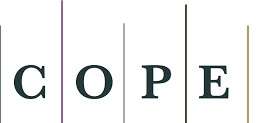Socioeconomic determinants of financial education in the Province of Cusco, Peru
DOI:
https://doi.org/10.26867/se.2023.v12i1.148Keywords:
Financial education, financial education, financial attitudesAbstract
The objective of the research was to determine and analyze the socioeconomic factors of financial education through the following indicators: household economy index, index of financial attitudes and behaviors and index of financial concepts and knowledge. For data collection, a questionnaire was used to measure financial capabilities based on the methodology used by the Development Bank of Latin America, applied to people between 18 and 80 years of age in the province of Cusco, and after data analysis, the indexes were calculated. For the econometric analysis, a multiple linear regression model was developed with robust statistics to measure the degree of relationship between socioeconomic factors and financial education. The results showed that the level of financial education in the province of Cusco is medium-high, explained by favorable results in two of three indexes (index of financial attitudes and behaviors and the index of financial concepts and knowledge); however, there is room for improvement in the household economy index, due to poor family budget planning. Finally, it was identified that the factors that have the greatest impact on financial education are educational level and income level.
Downloads
Metrics
References
Basha, S., Bennasr, H. y Goaied, M. (2023). Financial literacy, financial development, and leverage of small firms. International Review of Financial Analysis. Volume 86. https://doi.org/10.1016/j.irfa.2023.102510
Chong, J. y Nuñez, L. (2019). Sistematización de Iniciativas de Educación Financiera en Perú: Lecciones aprendidas y retos. SBS, Nota SBS N° 002. https://www.sbs.gob.pe/Portals/4/jer/PUB-NOTA-POLITUCA/Sistematizaci%C3%B3n_iniciativas_Educaci%C3%B3n_Financiera.pdf
Comisión Multisectorial de Inclusión Financiera. (2017). Plan Nacional de Educación Financiera. Superintendencia de Banca, Seguros y AFP. https://www.sbs.gob.pe/inclusion-financiera/Politica-Nacional/PLANEF
Denegri, M., Sepúlveda, J. y Silva, F. (2018). Comprender la economía: educación económica y financiera en la infancia desde una perspectiva constructivista. Ensino Em Revista. Universidad de la Frontera. Chile.
Duque, E., González, J. y Ramírez, J. (2016). Conocimientos financieros en jóvenes universitarios: caracterización en la institución universitaria ESUMER. Revista de Pedagogía, 37(101). https://www.researchgate.net/publication/315676004
Feijoo, A. (2016). Sistematización de iniciativas de educación financiera en el Perú. Proyecto Capital. Instituto de Estudios Peruanos. http://repositorio.iep.org.pe/handle/IEP/644
García, N. (2012). El impacto de la educación económica y financiera en los jóvenes: el caso de Finanzas para el Cambio. Banco de la República de Colombia. https://doi.org/10.32468/be.687
García, O., Zorrilla, A., Briseño, A., y Arango, E. (2021). Actitud financiera, comportamiento financiero y conocimiento financiero en México. Cuadernos de Economía, 40(83). https://doi.org/10.15446/cuad.econ.v40n83.83247
Instituto Nacional de Estadistica e Informatica. (2020). Cusco: Valor Agregado Bruto por años, según Actividades Económicas. https://www.inei.gob.pe/estadisticas/indice-tematico/producto-bruto-interno-por-departamentos-9089/
Instituto Nacional de Estadistica e Informatica. (2017). Censos Nacionales 2017: XII de Población, VII de Vivienda y III de Comunidades Indígenas. Resultados Definitivos para el Departamento de Cusco. https://www.inei.gob.pe/media/MenuRecursivo/publicaciones_digitales/Est/Lib1559/
Lusardi, A. y Mitchell, Olivia S. (2014) The Economic Importance of Financial Literacy: Theory and Evidence. Journal of Economic Literature. http://dx.doi.org/10.1257/jel.52.1.5
Lusardi, A. (2019). Financial literacy and the need for financial education: evidence and implications. Revista Suiza de Economía y Estadística. https://doi.org/10.1186/s41937-019-0027-5
Lusardi, A. y Bottazzi, L. (2021). Stereotypes in Financial Literacy: Evidence from Pisa. NBER Working Paper Series. Massachusetts. Cambridge https://doi.org/10.1016/j.jcorpfin.2020.101831
Mancebón, M., Ximénez, D., Mediavilla, M. y Gómez, J. (2019). Factors that influence the financial literacy of young Spanish consumers. International Journal of Consumer Studies, 43(2). http://dx.doi.org/10.1111/ijcs.12502
Mejía, D. y Rodríguez, G. (2016). Determinantes Socioeconómicos de la Educación Financiera: evidencia para Bolivia, Colombia, Ecuador, y Perú. Serie de Políticas Públicas y Transformación Productiva N° 23/2016. CAF. Bogotá: CAF. http://scioteca.caf.com/handle/123456789/835
Mejía, D. y Heimann, U. (2019). MOOC: Inclusión Financiera en América Latina: Retos y Oportunidades. CAF.
Mendez, K., Moreira, F. y Grigion, A. (2019). Indicador de Educação Financeira: Proposição de um Instrumento a partir da Teoria da Resposta ao Item. Universidade Federal de Santa Maria. Brasil. https://doi.org/10.1590/es0101-73302018182568
Messy, F. y Monticone, C. (2016). Financial Education Policies in Asia and the Pacific. OECD Working Papers on Finance, Insurance and Private Pensions, Paris. http://dx.doi.org/10.1787/5jm5b32v5vvc-en
Mungaray, A; Gonzalez, N. y Osorio, G. (2021). Educación financiera y su efecto en el ingreso en México. Problemas del Desarrollo. Revista Latinoamericana de Economía, vol. 52, núm. 205. https://doi.org/10.22201/iiec.20078951e.2021.205.69709
Organización para la Cooperación y Desarrollo Económico (2005), Improving Financial Literacy: Analysis of Issues and Policies. OECD Publishing. https://doi.org/10.1787/9789264012578-en
Organización para la Cooperación y Desarrollo Económico. (2018). OECD/INFE Toolkit for Measuring Financial Literacy and Financial Inclusion. OECD Publishing. París, Francia. https://www.oecd.org/financial/education/2018-INFE-FinLit-Measurement-Toolkit.pdf
Organización para la Cooperación y Desarrollo Económico. (2020). OECD/INFE 2020 International Survey of Adult Financial Literacy. OECD Publishing. París, Francia. https://www.oecd.org/financial/education/oecd-infe-2020-international-survey-of-adult-financial-literacy.pdf
Roa, M. y Carvallo, O. (2018). Inclusión Financiera y el Costo del Uso de Instrumentos Financieros Formales: Las experiencias de América Latina y el Caribe. BID. IDB-MG-603. http://dx.doi.org/10.18235/0001216
Roa, M. y Mejía, D. (2018). Decisiones financieras de los hogares e inclusión financiera: evidencia para América Latina y el Caribe. Centro de Estudios Monetarios Latinoamericanos (CEMLA). CAF. http://scioteca.caf.com/handle/123456789/1188
Superintendencia de Banca, Seguros y AFP. (2022). Perú: Reporte de Indicadores de Inclusión Financiera de los Sistemas Financiero, de Seguros y de Pensiones. Portal de Inclusión Financiera SBS. Lima. https://intranet2.sbs.gob.pe/estadistica/financiera/2022/Junio/CIIF-0001-jn2022.PDF
Trivelli, C. y Caballero, E. (2018). ¿Cerrando brechas? Las Estrategias Nacionales de Inclusión Financiera en América Latina y el Caribe. Lima, IEP, 2018. Documento de Trabajo 245. Estudios sobre Desarrollo, 23. http://repositorio.iep.org.pe/handle/IEP/1132
Valenzuela, M., López, V., y Aguilar, K. (2022). Endeudamiento y educación financiera en estudiantes universitarios. Revista Venezolana de Gerencia, 27(97), 198-211. https://doi.org/10.52080/rvgluz.27.97.14
Villagómez, A., e Hidalgo J. (2017). Financial literacy and mathematics. A study among young Mexican high school students. Revista Mexicana de Economía y Finanzas, 12(2), 1-22. http://www.scielo.org.mx/scielo.php?script=sci_arttext&pid=S1665-53462017000200001&lng=es&tlng=en.
Zárate, K., Chong, J., Ventura, E. y Mejía, D. (2020). Encuesta de Medición de Capacidades Financieras de Perú, 2019. SBS. CAF. http://scioteca.caf.com/handle/123456789/1689
Downloads
Published
How to Cite
Issue
Section
License
Copyright (c) 2023 Ruth Ebely Llalla Cahuana, Diana Rocio Torres Orosco

This work is licensed under a Creative Commons Attribution 4.0 International License.














